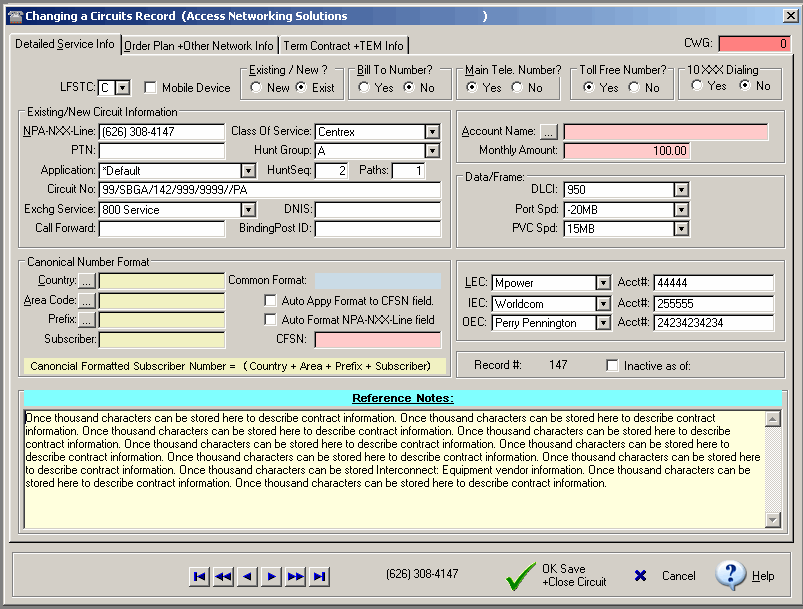TelcoMgr™ Circuit Record: Detailed Information Tab
Enter the appropriate information for each field. If you have entered the LEC and IEC information on the Master Telco record, the LEC and IEC information will be automatically populated into the Circuits record.

Circuit Tabs: Detailed Service Info | Order Plan +Other Network Info | Term Contract +TEM Info
Detailed Service Info Tab:
•LFSTC - TelcoMgr's user-defined shorthand designation. The letter (L) should be reserved for LINES.
•[ √ ] Mobile Device indicator
•Existing / New defaults as 'Existing'.
•Bill To Number (BTN) defaults as 'No'. Usually you only have one BTN, however, you may enter multiple BTNs.
•Main Tele. Number (MTN) defaults as 'No'. Select 'Yes' in the number is the starting/pilot number of a hunting group.
•The Local and Long Distance Carrier information group is automatically populated by the values in your Master Account record. You may over-ride the Master information if you wish.
•The Existing/New Circuit Information group is used to described specific details about the line/circuit, service, or feature.
•[NPA-NXX-LINE] is used to record the Area Code, Local Exchange, and the Line Number.
•Class of Service is used to record the type of line/circuit, service, or feature. Use the drop-down list to view previously entered Class of Services.
•[PTN] or Point-To-Number is used for many Class of Services. For example, often times a 'toll free' number is pointed to another number such as a main number of a specific hunt group.
•Hunt Group is used to identify which numbers/services belong to each other.
•Application is used to describe the primary purpose of use of each line/service.
•Path is used to determine the quantity of speech paths that the line provides. The following is a list of examples:
| 1. | Standard business lines = 1 |
| 2. | Centrex line = 1 |
| 3. | Basic Rate ISDN (BRI) = 2 |
| 4. | Primary Rate ISDN = 23 |
| 5. | T1 = 24 |
| 6. | DS0 = 1 |
| 7. | DS1 = 24 |
Related Information:
